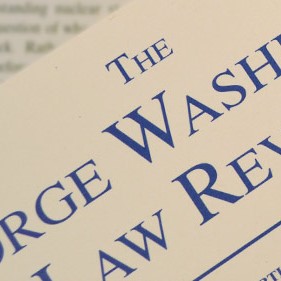Catherine M. Sharkey · April 2008
76 GEO. WASH. L. REV. 449 (2008)
Products liability is a realm in which Congress typically either says everything—coupling broad preemption provisions that would seem to wipe out competing state tort claims with broad “savings clauses” that would seem to preserve those same actions—or nothing at all. Moreover, Congress tends to legislate in a decidedly piecemeal fashion. Instead of comprehensive national products legislation, Congress regulates select product areas in which it typically focuses on the liability side, fashioning federal safety standards and requirements, and all but ignores the remedial side, including private enforcement mechanisms.
A new approach to products liability preemption must highlight the issue’s institutional dimension: when Congress punts, courts and federal agencies vie to fill the interpretive gap. A modern take must also recognize that products liability preemption is multidimensional, involving layers of legal and policy issues—from the determination of the optimal regulatory sphere (national or state), to federalism issues, to the level of deference accorded agency determinations. Questions about the proposed preemptive effects of federal legislation above and beyond the customary and usually inconclusive inquiry into legislative intent must be posed (and answered). First, how should courts determine the extent to which their decisions must defer to, or advance, a federal regulatory policy due to interests such as promoting national uniformity or coordination among the states? Second, if such a federal policy exists, what is the optimal balance between commonlaw tort actions and federal regulation, considered in light of the comprehensiveness of the regulatory scheme?
With these animating principles in mind, I advance an “agency reference model” for judicial decisionmaking in products liability preemption cases: courts should look to agencies to supply the empirical data necessary to determine whether a uniform federal regulatory policy should exist—as agencies are in the best position to gather and evaluate data—and to make informed choices regarding the welfare of the American public. It may well be that the search for any global solution to the problem of the optimal regulatory level for products in an increasingly national (indeed international) market economy will be in vain. But a wealth of empirical evidence, furnished by federal regulatory agencies, can aid a more particularized search. Behind agency decisions to regulate or to refrain from regulating is a rich body of empirical cost-benefit (or increasingly risk-risk) analyses. These analyses made by the agency at the time of its action (or inaction), as well as the nature of the agency action and the contemporaneous reasons given by the agency to justify it, can guide courts’ judgments regarding the need for, and equally significantly, the present feasibility of, uniform national regulatory standards.
This institutional approach departs from conventional preemption analysis with its focus on formal doctrinal categories and from the “presumption against preemption” interpretive canon, which directs courts to construe statutes not to preempt, absent a clear statement by Congress to the contrary. Instead, it places federal agencies front and center in a realm in which they have often lurked just out of focus. The inquiry takes us into the heartland of administrative law, which is no surprise given that in our modern administrative state most statutory interpretation is left to agencies, not to the courts. But my particular focus is the functional analysis that provides content to (or, at a minimum, complements) any interpretive exercise, whether by court or agency. My aim is to show that the agency reference model not only provides a better explanation for judicial outcomes, but also contains the seeds of a satisfying normative approach to products liability preemption jurisprudence.

